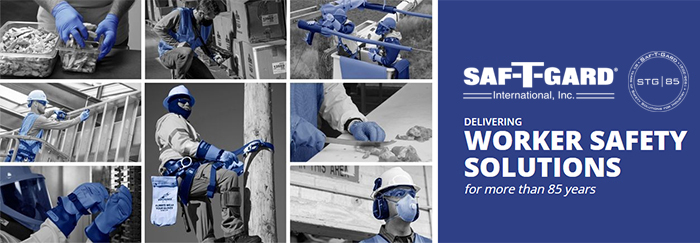| |
Fall Protection Tops OSHA's 'Top 10' List of Most Frequently Cited Standards for Fiscal Year 2022
|
| |
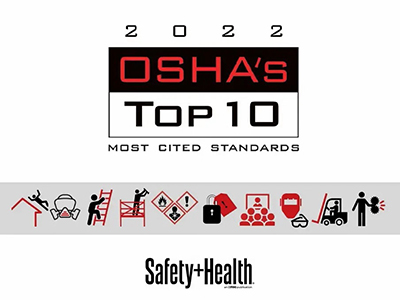
|
| |
The
Occupational Safety and Health Administration (OSHA) released its preliminary
list of the most frequently cited safety standards for fiscal year 2022 on
September 20th during the 2022 NSC Safety Congress & Expo. This
annual list is determined from worksite inspections throughout the year and
aims to alert employers and safety professionals about frequent citations and
violations to help prevent their occurrence.
For the
12th straight fiscal year, Fall Protection – General Requirements is OSHA’s
most frequently cited standard, followed by hazard communication and respiratory
protection.
The
standards that comprise the Top 10 remained unchanged from FY 2021, with some
movement within their ranking. Hazard Communication, which ranked fifth in FY
2021, climbed three spots to No. 2, with Respiratory Protection, Ladders and
Scaffolding rounding out the top five. The full list is as follows:
- Fall Protection, General Requirements (29 CFR 1926.501): 5,260 violations
- Hazard
Communication Standard, General Requirements (29 CFR 1910.1200): 2,424 violations
- Respiratory
Protection, General Industry (29 CFR 1910.134): 2,185 violations
- Ladders, Construction (29 CFR 1926.1053): 2,143 violations
- Scaffolding, General Requirements, Construction (29 CFR 1926.451): 2,058 violations
- Control of Hazardous Energy (Lockout/Tagout), General Requirements (29 CFR 1910.147): 1,977 violations
- Powered
Industrial Trucks, General Requirements (29 CFR 1910.178): 1,749 violations
- Fall
Protection, Training Requirements (29 CFR 1926.503): 1,556 violations
- Personal
Protective and Lifesaving Equipment – Eye and Face Protection (29 CFR 1926.102): 1,401
violations
- Machinery and Machine Guard, General Requirements (29 CFR 1910.212): 1,370 violations
Do any of these safety violations look familiar to
you? Don’t let your company or your workers become a statistic! Saf-T-Gard has
been bringing workers home safely for more than 86 years, and we can do the
same for you! Since its establishment in 1936, Saf-T-Gard has enabled
on-the-job safety, compliance and peace of mind for hundreds of thousands of
workers and their families, by delivering superior safety products and
solutions that protect against work-related hazards and prevent serious
injuries. Click here to shop more than 14 different
categories of safety products that can help prevent these OSHA citations and so much more, or call customer service at 1-800-548-GARD (4273) today for
more information or to place an order.
|
| |
|
| |
Saf-T-Gard® Voltgard® Emergency Storm Response and Recovery Services |
| |
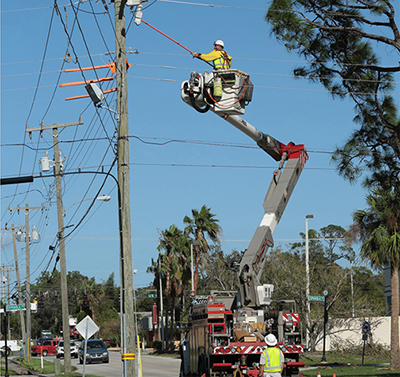
|
| |
Weather
can be a fierce and unpredictable foe sometimes. Hurricanes, floods, blizzards,
ice storms, tornadoes and earthquakes oftentimes strike fast and without
warning, leaving regions without power for an extended period of time depending
on how quickly lineman crews can be deployed.
Rest
assured that when disasters strike, Voltgard® is
prepared and available to provide immediate response in supplying the
electrical safety needs of your work crew - no matter how big or small - to
help ensure a safer and faster recovery for everyone. The safety of your
employees is our highest priority. As such, Voltgard® offers a 24/7 storm
response hotline for the emergency shipments of rubber insulating products and
safety equipment including PPE. Additionally, Voltgard® has one of the
largest new rubber goods inventories in the world, available and ready to ship
or pickup in a matter of hours. Our centrally located Chicago area location is
minutes away from both FedEx and UPS centers and 30 minutes away from Chicago's
O'Hare International Airport.
Moreover,
Voltgard® can also assist you
in your pre-event storm planning by supplying the necessary safety
equipment in advance, thereby saving you time and money by enabling a more
proactive response in times of critical emergencies.
Whatever
Mother Nature throws our way, Voltgard® is committed to
weathering the storm together by providing unwavering support that lasts
before, during and after any natural disaster. Click here, or contact customer service at 1-800-548-GARD
(4273) today for more information.
|
| |
|
| |
Saf-T-Gard® Voltgard® Insulating Roll Blankets |
| |
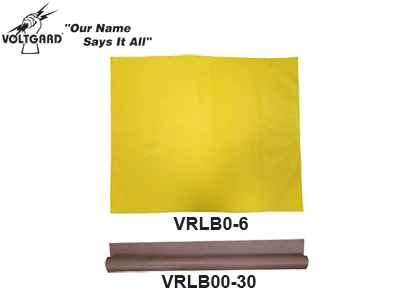
|
| |
Available
in Class 00 (brown color) in sizes 3’ x 6’ (VRLB00-6) and 3’ x 30’ rolls (VRLB00-30) and Class 0 (yellow color) in sizes
3’ x 6’ (VRLB0-6) and 3’ x 30’ rolls (VRLB0-30), Saf-T-Gard® Voltgard® Insulating
Roll Blankets are ideal for use by electrical utility workers,
power and communication linemen, electrical contractors, electrical field
service technicians, telecommunications companies, cable television operators,
auto manufacturing/repair service workers, municipalities, first responders,
energized machine operators and industrial plant and facility maintenance
technicians or anywhere protection is needed from accidental and incidental
contact with energized lines, energized equipment and irregularly-shaped
hardware. Additional features and benefits include the following:
- Insulating
roll blankets, made from a high-strength reinforced Type II rubber, allow
workers to custom-cut blankets to fit each application at the job site
- This
minimizes the number of different low-voltage blanket sizes and shapes that
would be needed from job to job
- Roll
blankets are easy to cut and stay flexible, even in temperatures that get down
to -40° F
- Highly
puncture and tear resistant, each blanket is also flame, oil, and ozone
resistant
- Type II rubber roll blankets meet ASTM F2320 standards
Click here to
shop the Saf-T-Gard® Voltgard® Insulating
Roll Blankets online or call customer service at 1-800-548-GARD
(4273) today for more information or to place an order.
|
| |
|
| |
Sudden Cardiac Arrest Awareness Month and World Restart a Heart Day |
| |
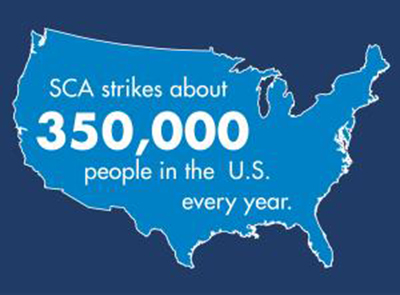
|
| |
Sudden
cardiac arrest is the leading cause of death in the United States. Every year,
more than 350,000 people suffer out-of-hospital sudden cardiac arrest (OHCA) in
the United States. Of those victims, only about 12% survive according to the
American Heart Association (AHA).
When a person suffers sudden cardiac arrest
(SCA), they collapse suddenly and become non-responsive. The heart stops
beating regularly, and the brain is deprived of oxygen. Without intervention,
victims of cardiac arrest can die in minutes. If a person collapses suddenly
and is unresponsive, they should be treated with both high-quality CPR and an
AED. Performing high-quality CPR helps to circulate blood and oxygen to the
brain and vital organs.
On
October 16th, World Restart a Heart Day creates awareness that everyone can
learn CPR and other basic life-saving techniques. The day also recognizes the
number of lives saved each year by CPR.
Who
invented CPR? This question might seem like an easy one to answer. However,
this isn’t the case as CPR has evolved through the years. Throughout history,
doctors and surgeons have tried to develop the best way to restart a heart
after it has stopped beating.
CPR
Timeline
- The
1500s to 1800s – Practitioners used various versions of the Bellows Method.
This method used fireplace bellows to force air into the lungs. As they made
more advances in medicine, they also introduced more effective methods.
- 1732 –
William Tossach, a surgeon from Scotland, first successfully used
mouth-to-mouth resuscitation. However, in 1782, the Bellows Method became the
preferred way to inflate the lungs artificially.
- 1874 –
Research conducted by physiologist Moritz Shiff showed that heart massage can
restore circulation.
- 1891 – Dr.
Friedrich Maass from Germany became the first to advocate chest compressions to
restart the heart.
- 1933 –
Researchers at Johns Hopkins University discovered that using external chest
compression provided adequate circulation. An electrical engineer named William
Kouwenhoven led the research. Many consider him the founder of modern CPR.
- 1957-
Kouwenhoven’s team unveiled a prototype of the first portable external
defibrillator.
- 1960 –
Kouwenhoven and other resuscitation pioneers combined mouth-to-mouth
resuscitation with external chest compressions. This method became known as
cardiopulmonary resuscitation (CPR). According to the American Heart
Association (AHA), up to 200,000 lives each year could be saved if CPR was
performed early enough.
HOW TO
OBSERVE #WorldRestartAHeartDay
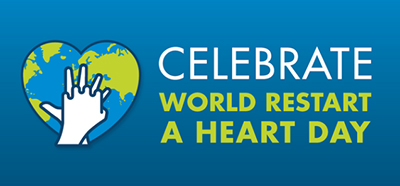
On this
day, healthcare professionals and heart associations worldwide educate the
general public on how to perform CPR. It’s also a day for people to share
stories of how CPR saved their life. The best way to participate is to commit
to learning CPR and other life-saving techniques. You can also spread awareness
for this day on social media with #WorldRestartAHeartDay.
|
| |
|
| |

|
Choosing the Right Respirator for Hurricane Cleanup |
| |
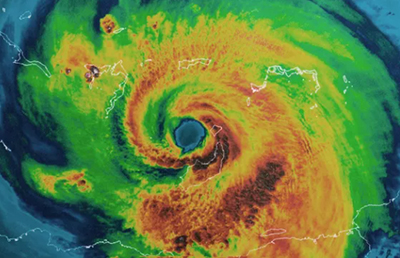
|
| |
A
hurricane season averages about 10 named storms, of which more than half
typically become hurricanes, according to the National Oceanic and Atmospheric
Administration. As coastal development continues to increase, emergency
managers expect high potential damage. As flood
waters recede, they can leave behind mold, as well as structural damage that
can release asbestos and other particles into the air. These contaminants —
along with the chemicals used in cleaning products — can cause allergies,
asthma and lung damage. Organic
vapors include those from wastewater or decaying matter like food, plants or
animals. Acid gases include hydrogen
sulfide, which occurs naturally in sewers and also can be released by damage to
some kinds of drywall.
NOW IS
THE TIME TO MAKE SURE YOU HAVE THE CORRECT RESPIRATOR PROTECTION FOR CLEANUP
WORKERS.
Respirators
come in several different types — from disposable masks to powered air
purifying respirators (PAPR) — which prevent the inhalation of mold and other
contaminants.
-
Disposable - Covers nose and mouth; filtering face pieces help protect
against particulates including dusts, mists, and fumes.
- APR -
Air-purifying respirators are available in multiple head gear options. They
draw air through filters and cartridges to help protect against various
contaminates.
- PAPR -
Powered air-purifying respirators are available in half mask, full face, hoods,
and helmets. They utilize filters and cartridges to help protect against
various contaminants.
CHOOSE
THE RIGHT FILTERS AND CARTRIDGES.
Make
sure workers using any type of air-purifying respirator for hurricane cleanup
have the appropriate filters for the contaminants in the environment.
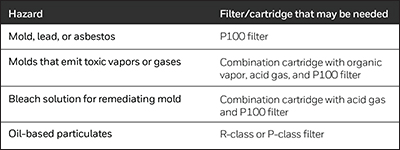
Click here to download and share the infographic
for a quick and easy visual reference. Saf-T-Gard
supplies a full-range of Honeywell respiratory protection products including
disposable respirators, reusable full and half-mask respirators, cartridges and
filters, powered and supplied air systems, Escape respirators and respiratory
protection accessories. Click here to shop them online, or call
customer service at 1-800-548-GARD (4273) today for more
information or to place an order.
|
| |
|
| |

|
Watch the FREE Ansell It's the Dose that Makes the Poison: Cumulative Effect of Exposure to Hazardous Substances Webinar ON DEMAND |
| |
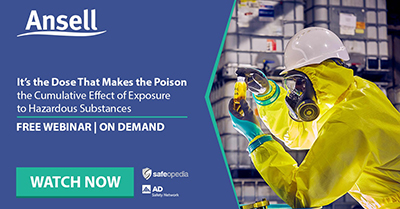
|
| |
Workers
in industries that use various chemicals face serious consequences of exposure
to hazardous substances. It’s critical to understand how to assess chemical permeation and cumulative mass vs. breakthrough time, and in many
cases, it’s important to learn some advanced permeation detection techniques
for complex chemical mixtures.
Join Ben
Sepe, Ansell Associate Director of Business Development and Regional Product
Portfolio Manager, in the It’s the Dose That Makes the Poison: Cumulative
Effect of Exposure to Hazardous Substances Webinar and walk away with a better
understanding of the impact chemical hazard exposure has on the health and
safety of employees and be armed with knowledge and tools to improve outcomes
at their own site immediately!
Click here to
register and watch the FREE webinar ON DEMAND today.
|
|
|
|
|

|
|
| Duty to Protect |
|
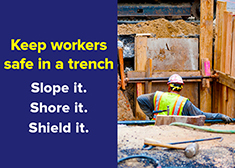
|
|
|
Employers
have an obligation to provide a
workplace free from recognized safety and health hazards. Those
who show indifference to their responsibilities may be placed in OSHA's Severe
Violator Enforcement Program.
|
|
| |
|
Shop @ Saftgard.com - The Smart, Simple and Speedy Way to Shop for Safety Online Today!
|
|

|
|
|
Saftgard.com makes it easier than ever for visitors to find exactly what they are looking for by utilizing a guided navigation layout with a fully-optimized “smart” search engine. The responsive design enables use and access to more than 6,000 products with enhanced product content and imagery on your PC, smart phone or tablet.
Moreover, existing Saf-T-Gard customers can link their account to a new Saftgard.com web login to review ALL past orders and invoices, create a “wish list” of favorite items, save carts to simplify the ordering/reordering process and so much more! Buyers without an existing Saf-T-Gard account can register for one online, or they can still search, browse and order on Saftgard.com without a Saf-T-Gard account.
We invite you to spend a few minutes at Saftgard.com, and if you haven't already, please register for an account to enable online ordering.
Click here for a shortcut to the registration page, and click here for detailed instructions on how to link your Saf-T-Gard account to a Saftgard.com web login.
|
|
| |
|
Visit with Saf-T-Gard
|
|
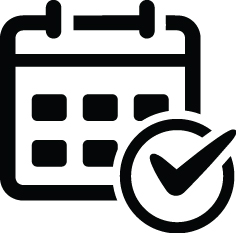
|
|
|
Hazards exist in every workplace. Common examples include slips, trips, falls, exposure to loud noises, working from heights, vibrations and unguarded machinery. The best way to protect your employees is to recognize the hazards that exist on the job, and control them by utilizing the appropriate personal protective equipment (PPE) for the application.
This is where Saf-T-Gard can help! We've been bringing workers home safely since 1936 with our finest industrial safety products and PPE, and we can do the same for you. Stop by our booth at any of the following trade shows to check out our comprehensive selection of safety products and services that directly address every workplace safety hazard.
International Lineman’s Rodeo – Thursday, October 13, 2022, from 12:00 p.m. to 5:00 p.m. and Friday, October 14, 2022, from 9:00 a.m. to 3:00 p.m., Overland Park Convention Center, Overland Park, Kansas, Booth #217
NECA Safety Leadership Summit – Monday, November 14, 2022, from 4:30 p.m. to 7:00
p.m. and Tuesday, November 15, 2022, from 4:45 p.m. to 7:00 p.m., Seelbach
Hilton Hotel, Louisville, Kentucky, Booth #42
|
|
| |
|
Five Safety Tips
|
|
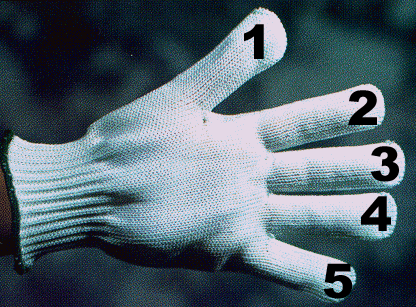
|
|
|
1. GOOD (UN)VIBRATIONS - ANSI has adopted
as an American Standard the international anti-vibration glove standard now to
be known as ANSI S3.40/2002:ISO10819. Be sure the vibration-reducing gloves you
use are in compliance.
2. TIP TOP TOES - Steel toe boots
and work shoes meeting ANSI A41 I/75 C/75 standards provide safe toe
protection.
3. BREATHE DEEP
BREATHE EASY - Gas detection instrumentation is available for single gas and
multi-gas hazards.
4. LOCK IT UP - Lockout/tagout
procedures and products are simple and convenient to use and assist in OSHA
compliance.
5. AND WHEN ALL ELSE
FAILS - New standards for first aid kits are based on intended use and
hazards and should always be convenient and accessible.
|
|
| |
|
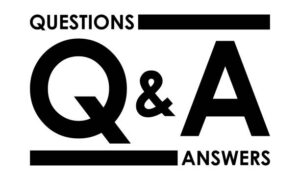
|
|
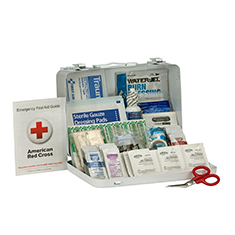
|
|
|
Question - Is it mandatory for all
workplaces to provide a first aid kit?
Answer - Title 29 CFR
1910.151(b) states: "In the absence of an infirmary, clinic, or hospital
in near proximity to the workplace which is used for treatment of all injured
employees, a person or persons shall be adequately trained to render first aid.
Adequate first aid supplies shall be readily available."
Employers may
elect not to provide first aid services if all such services will be provided
by a hospital, infirmary, or clinic in near proximity to the workplace. If the
employer has persons who are trained in first aid, then adequate first aid
supplies must be readily available for use.
Therefore, employers are required
to provide first aid supplies that are most appropriate to respond to incidents
at their workplaces. OSHA allows employers to provide first aid supplies
specific to the needs of their workplace.
|
|
| |
|
| Saf-T-Gard Spotlight |
|

|
|
|
Brian Maher is a member of the
Saf-T-Gard Sales Team and joined Saf-T-Gard more than 8 years ago as an Account
Manager.
What Brian likes
about Saf-T-Gard:
“Everyone
works towards the same goal of getting the best product, at the best price, to
our customers when they need it. Having a large inventory in our warehouse
helps this as well.”
What makes Brian's
day:
“When
someone calls in a panic because they have an urgent need for the next day and
everything ships smoothly from our warehouse that same day.”
Brian's outside
interests are:
“Golf,
fishing, riding and caring for our horses.”
Anything else:
“I enjoy
reading about history and biographies.”
|
|
| |
|
 Factoid Factoid |
|
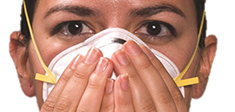
|
|
|
Are both or either of the positive and negative seal checks described in
OSHA regulations required when donning a respirator?
The Respiratory Protection standard, 29 CFR 1910.134, requires employers
to ensure their employees perform a user seal check each time they don a
tight-fitting respirator using either the "user seal check"
procedures in Appendix B-1 or equally effective procedures recommended by the
respirator manufacturer.
When following Appendix B, both the positive and
negative seal checks are required to be performed, if possible. Variations in
the construction of respirators may make the performance of either the positive
or the negative seal check impossible to perform. In this case, the employer
must follow the manufacturer's recommendations.
The "equally
effective" phrase is intended to ensure that the recommended procedures
have been demonstrated to be effective in identifying respirators that do not
seal properly when donned or adjusted. This may at times involve performing only
the positive or negative seal check.
If no method exists to check whether a
respirator re-seals during multiple re-donnings under actual workplace
conditions, it is not acceptable for use, and a different respirator must be
selected. OSHA does not permit the use of tight-fitting respirators that cannot
be seal-checked.
|
|
| |
|
| As I See It |
|

|
|
|
It is September 2022 and this month we’ll focus on OSHA’s Top 10
Violations for the past 11 months (OSHA fiscal year 2022).
In case you missed the announcement at this month’s National
Safety Congress, here’s the list (again):
- Fall Protection, General Requirements
- Hazard Communications, General Requirements
- Respirator Protection, General Industry
- Ladders, Construction
- Scaffolding, General Requirements and Construction
- Control of Hazardous Energy (Lockout/Tagout), General Requirements
- Powered Industrial Trucks, General Requirements
- Fall Protection, Training Requirements
- Eye and Face Protection
- Machinery and Machine Guard, General Requirements
A few things stand out and are worth commenting. Fall protection
is on the list TWICE! Pandemic and supply chain issues notwithstanding, there
has been no shortage of fall protection products and qualified trainers are
available as well. Does it really take nearly 7,000 violations to get
attention? Saf-T-Gard can help. We have choices of products available and can
arrange for training as well.
Lockout/Tagout seems to make the list every year, and there’s no
reason for it. The concept is simple and the LOTO products needed are readily
available. Control of, and protection from, hazardous energy is one of our core
specialties. How can we help you?
And when I see Respiratory Protection and Eye & Face
Protection on the list, my first reaction is the comfort factor of worker
compliance. And, again, there are choices because no two faces are alike, so
selecting suitable eye, face, and respiratory protective products is not a
lowest common denominator process. The Saf-T-Gard team of experienced safety
specialists can help here, too.
Notice
a common theme – we’re here for you, because we are Saf-T-Gard International - Bringing Workers Home Safely Since 1936.
Sincerely,
Richard A. Rivkin, Saf-T-Gard CEO and Chairman of the Board
|
|
|
